
EDUCATION
Conservation Kids
Feeling stuck inside? Why not bring the outdoors in and explore the exciting world of nature through science, crafts, songs, and stories? Or take a look through your window, a step into your backyard or onto your balcony, or a stroll through your neighbourhood to discover some signs of the season.
Search By:

'Get Outside' Foldable Booklet
Learn how to cut and fold a single piece of paper into a pocket-sized booklet and head outside for some time in nature.
Level:
Middle and Older Elementary


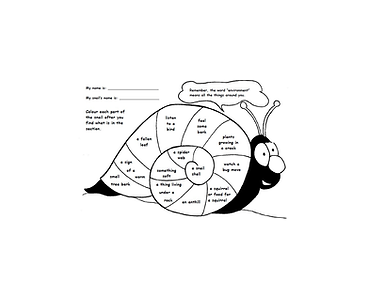
'My Snail' Scavenger Hunt
Colour in your snail as you explore your neighbourhood. What things are too hard to find in the winter? Why?
Level:
Early Years and Young Elementary



A Snack for You and The Birds
Make a biodegradable bird feeder by cutting an orange in half and eating the inside of the orange with a spoon. Carve out the remaining bits to create a smooth bowl. Poke three holes in the sides around the top, tie a string through each hole and join the strings above the half orange. Fill with bird seed and hang from a tree.
Don't have oranges? Create a bird feeder by recycling a plastic pop bottle with Ontario EcoSchools.
Level:
Early Years and Young Elementary
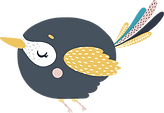

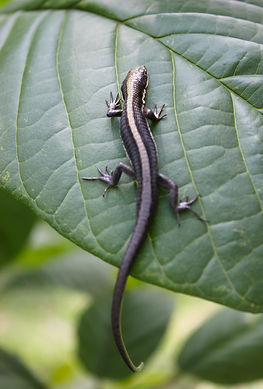
Amphibians
Ever wondered what happens to frogs in the winter? Some frogs like wood frogs and spring peepers turn into frogsicles. Parts of them actually freeze solid! Their hearts stop beating and they stop breathing. The vital parts of their bodies are protected with a natural antifreeze called glycerol. When they eventually thaw in the spring, they're as good as new and hop around like nothing happened!
Frogs and toads have a metamorphosis life cycle, which means they go through some big changes as they grow from an egg to a tadpole, to a sub-adult to an adult.
If you are interested in frog songs, have a listen to the Cable Natural History Museum's animation of eight common frogs and the timelines of when they sing. It's quite the chorus!
Level:
Middle and Older Elementary



Are You My Mother?
See if you can match the chicks that are ready to leave their nest with their mothers.
Level:
Early Years and Young Elementary



Birds with Hats
While many birds migrate, a few stay around all year. One of these tough guys is the black-capped chickadee. So how did they do it? One of the coolest things chickadees do to survive the winter is grow bigger brains! Like squirrels, chickadees store away food in the fall to prepare for winter and their bigger brain helps them remember where all their hiding spots are.
Chickadees have 15 different calls but are named after their “Chickadee-dee-dee” call which is often used to alert other chickadees to danger. How scary are you? The more “dees” they add to the end of their call, the greater the threat.
In the spring the males are often loudly heard singing their “cheese-burger” whistle. (“Cheese” is whistled high and then “burger” is whistled a little lower.) They mostly use this song to advertise their territory and attract a female. Females don’t only care about the song through, they are looking for males who are dressed their best with bright white feathers and shiny ultraviolet dark feathers. Check out the Royal Botanical Gardens’ “Looking for Chickadees” page to learn a few more of their calls and their “Chickadee Food Scavenger Hunt” to see how hospitable your backyard is to chickadees.
Level:
Middle and Older Elementary
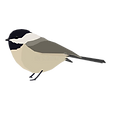


Busy Bee
Bees help plants make fruit from their flowers by carrying yellow powder called pollen from flower to flower as they search for sweet, tasty nectar. Most of the native bees in Ontario live by themselves and nest in the ground.
Some native bees also lay their eggs in hollow plant stems. Ask an adult to help you make a bee hotel and check out this pollinator poster to see what other animals help spread pollen.
Level:
Early Years and Young Elementary


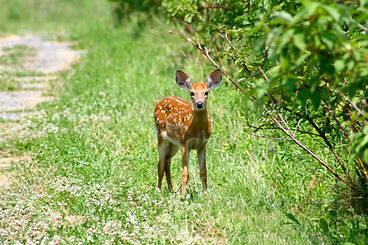
Hearing with Deer Ears
Take a walk around your neighbourhood and look for signs of spring. Choose somewhere to stop and listen.
Make 'deer ears' by cupping your hands behind your ears to help you hear better. How many different sounds can you hear? Remove your deer ears and see if you can still hear the same number of sounds.
Did you know that deer have excellent hearing and can even turn their ears to hear sounds behind them? Can you wiggle your ears? What is your favourite sound?
Level:
Early Years and Young Elementary



Invader Raiders
Did you know that some of the plants and animals you find in nature are actually invaders? They haven't always lived in Ontario. Join the Superhero Invader Raiders in their quest to find and report invasive plants, animals and insects through the Ontario Invasive Plant Council's Activity Book. Then colour in all the native plants on the Canadian Wildlife Federation's "Copy Nature and Support Wildlife" page. Our wildlife need native plants!
Level:
Middle and Older Elementary



Kid's Birding Checklist
Print and fold to create your birding pocket booklet for Lynde Shores Conservation Area. How many birds can you identify? How many of each can you find? Please remember to only feed the songbirds only seeds and take home your extra seeds, because the birds are amazing at finding everything they need in nature!
Level:
For Everyone



Looking Up
Go for a night walk with your family, leaving your flashlights and cell phones at home. On a clear night you might glimpse the moon. What phase (shape) is it? Is it full, quarter or crescent? Venus, a planet, is very clear in the western horizon right now; it's one of the brightest things you will see. Can you find the big and little dipper?
When you return home, look at the calendar to see if you guessed the moon phase right. If you go on more night hikes, consider charting the phases of the moon on a calendar with a small sketch to determine if it is waxing (getting larger) or waning (getting smaller). Can you predict when we will have the next full moon?
Sometimes you can see the moon in the daytime. Why is it in different spot from where it was in the evening? Why does the moon have different phases? Do some research on our night skies and share three interesting facts at dinner.
Level:
Middle and Older Elementary



Nature Weaving
Find a branch that makes a 'V' in your backyard or on a neighbourhood walk. Tie some string around one side of the V to secure it, and wind it across to the side of the V, back and forth to make a loom. Find some yarn, string, long, dried-out grasses and weave them in and out of the string to create a beautiful piece of art!
Add nature items like leaves, berries, seeds and pieces of bark or seashells you might have brought home from a trip to a beach. Hang it up inside or outside, and add to it as you take future nature walks.
Remember, only take what is on the ground and unattached items. Don’t pick plant leaves and living items to add. You have four seasons to decorate your branch, so be patient.
Level:
Early Years and Young Elementary

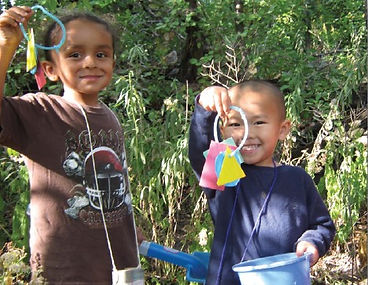
Shapes in Nature
Make a shapes bracelet, then head outside! What do you spy?
Find out how to make a Tangram Puzzle. What winter nature can you create?
Level:
Early Years and Young Elementary



Shapes in the Shadows
Just before bed, set up a lamp to shine on your wall and try your hand at shadow puppetry. How many different animals can you make? Brainstorm some wildlife that lives in your neighbourhood. Can you recreate any of them as shadows on your wall? Invite a sibling or parent to join you and perform a hand-shadow puppet show.
Level:
Middle and Older Elementary



Smart Watersheds
Be a scientist by becoming a Weather Watcher or a Water Watcher with CLOCA! Collect weather information in your Weather Watch Journal or book a water quality monitoring backkpack from your local library and head out to a water monitoring station.
Level:
Middle and Older Elementary



The Caterpillar Song
(Tune: Eensy Weensy Spider)
The eensy weensy caterpillar climbed up on a leaf. (use finger to inch along like a caterpillar)
He spun a cocoon and then he went to sleep (spin hands around each other and lay head down)
While he was sleeping he dreamed that he could fly (wave hands like wings)
When he woke up, he was a butterfly!
Level:
Early Years and Young Elementary
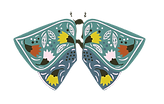

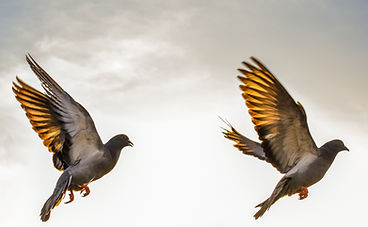
The Exciting World of Birds
Check out the bird activities posted on our blog where you can try your hand at a virtual owl pellet dissection, listen to a story about the many purposes of feathers, make some chalk out of egg shells, learn the science behind flight, find out who is the true bird feeder bully and more...
Level:
Middle and Older Elementary


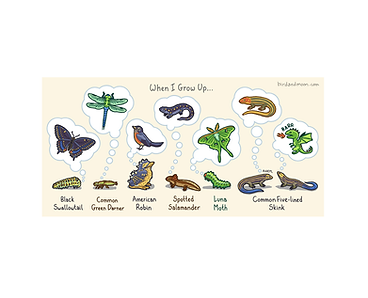
Transformers
When is your birthday? Most wild animals have their birthday in the spring! Some baby animals look very similar to their parents (only cuter), while others are like transformers and go through big changes called metamorphosis.
What do you think you will look like when you grow up? Birds, butterflies and frogs all start as eggs. Can you colour, cut out the pictures and place them in order? Ask an adult to help you create a flip book for each animal.
Level:
Early Years and Young Elementary



Unbe-LEAF-able
Can you name that tree? Check out these easy to use guides from Forests Ontario and head outside to see if you can figure out who is who!
Here's a sheet with illustrations to help you out with some of the tree and leaf anatomy names like pinnate and lobed.
If it's an evergreen tree you're trying to name, check out this neat wheel guide you can put together. It'll ask you a few questions and then reveal the answer!
Level:
Middle and Older Elementary


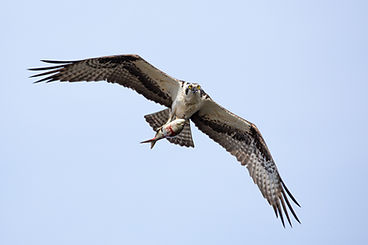
What Is Your Wingspan?
A bird's wingspan is the measurement of how wide they can stretch their wings. Stretch your arms as far apart as you can and then have an adult measure (in inches) what your wingspan is. What bird do you match? What about other people in your family?
Level:
Early Years and Young Elementary



Which Nest is Best?
If you were a bird, where would you build a nest? Some birds prefer ledges, others platforms, the side of a cliff, or even the ground. Some birds also nest in holes in trees. These are called cavity-nesting birds. To a cavity-nesting bird, a birdhouse is the same as a hole in a tree, so they are quite happy to build a nest in a birdhouse.
How many differences can you find between these two birdhouses? Which one is a good birdhouse and why? Check your answers here.
Check out the Cornell Lab of Ornithology’s “Features of a Good Birdhouse” infographic to learn more about great bird houses. If you’re interested in building your own birdhouse, use their “Right Bird, Right House” interactive to search for designs that would work well in your region and habitat. If you already have a birdhouse and want to learn more, visit their “All About Birdhouses” page.
If you don’t have a birdhouse, colour in all the things that make this backyard a great place for birds. Remember, birds need, food, water, and shelter!
Level:
Middle and Older Elementary


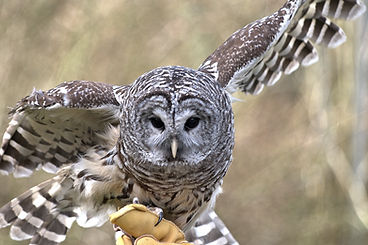
Who Cooks for You?
"Who cooks for you? Who cooks for you all?" is the call of the Barred Owl. Did you know owls' eyes are so large that if owls were the same size as people, their eyes would be the size of grapefruits!
Speaking of fruit, owls don't really have eyeballs, their eyes are pear-shaped so they have to move their whole head if they want to look around.
Can you make a call like the Barred Owl? What do you spy with your owl eyes?
Level:
Early Years and Young Elementary


